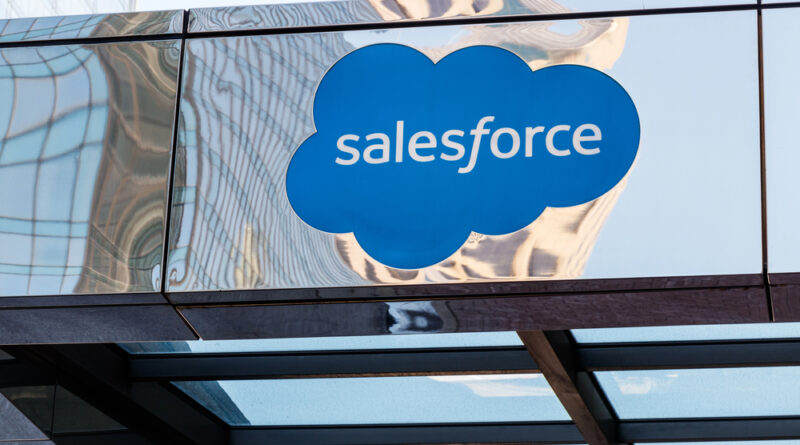Salesforce’s Half-Human Workforce: How Marc Benioff’s AI Pivot Is Redrawing the Tech Labour Map
When Marc Benioff launched Salesforce a quarter-century ago, he promised a revolution in cloud software. Today the billionaire founder is pitching an even larger upheaval: a sprawling “digital labour platform” that, he claims, already performs between 30 and 50 per cent of the company’s day-to-day engineering, support and service work.
Automation on the inside
Salesforce employs just over 76,000 people worldwide, yet the company’s internal dashboards now credit generative-AI agents—built on its Einstein and Agentforce product lines—with handling everything from bug-fixing and code reviews to first-line customer responses. The in-house rollout has boosted key productivity metrics by double digits, and it has given Benioff confidence to freeze most engineering recruitment for the year ahead.
That shift is already visible in head-count numbers. After cutting roughly 7,000 positions during the 2023 tech downturn, Salesforce announced a fresh round of 1,000 redundancies in February while simultaneously advertising 2,000 new roles focused on selling AI-driven products. The pattern captures a broader recalibration across Silicon Valley: traditional developers out, AI-savvy solution architects and go-to-market specialists in.
The stock-market tightrope
Investors remain divided on whether the transformation is creating value or cannibalising it. The company’s shares are down nearly 20 per cent this year, a slide fuelled by analyst worries that Salesforce may be sacrificing its core CRM momentum—or over-promising on early-stage AI revenue—just as macroeconomic headwinds dim enterprise spending. Some Wall Street houses still see the AI push as a growth catalyst; others describe Agentforce as a “show-me story” that must prove real adoption beyond pilot projects.
The debate intensified in May when Salesforce lined up an $8 billion all-stock purchase of Informatica, a data-management specialist whose tools could make it easier for customers to feed proprietary information into Agentforce models. Analysts predict only a modest revenue bump from the deal in fiscal 2026, underscoring how long it may take for the AI bet to move the top line.
Customers in the cross-hairs
Benioff’s assertion that AI already handles up to half of Salesforce’s own workload raises an uncomfortable question for his clients: if the vendor can automate so aggressively, why wouldn’t its subscribers do the same—and, in the process, require fewer Salesforce licences? Company insiders argue that the dynamic should work in their favour. As customers off-load tasks to AI agents, demand for data-processing capacity, integration middleware and real-time analytics is expected to expand, all of which live inside the Einstein/Agentforce stack.
Yet early case studies suggest a more nuanced picture. Retailers piloting Agentforce for customer-service chatbots have trimmed contact-centre staffing by low single-digit percentages instead of the sweeping reductions some executives hoped for. Implementation timelines remain lengthy as firms wrestle with data-quality issues and regulatory hurdles around synthetic decision-making.
Re-skilling or risk-skilling?
For Salesforce’s remaining employees, the next two years will hinge on how effectively the company can re-train staff to work alongside AI co-pilots rather than compete with them. Internal training modules now teach prompt-engineering, model-evaluation techniques and ethical-AI guidelines alongside traditional Apex coding. Human managers are being reassigned to supervise teams of autonomous agents, validating outputs and stepping in when the software encounters edge cases it cannot resolve.
Labour economists predict this “centaur” model—part human, part machine—will dominate enterprise technology by the end of the decade. But it also intensifies the divide between workers who can adapt and those whose specialist skills have been absorbed by algorithms. Salesforce’s own trajectory offers an early glimpse of that tension: expanding overall AI revenue potential while delivering fewer net engineering jobs than just two years ago.
The road ahead
Whether Benioff’s 50-per-cent figure proves optimistic or prophetic, Salesforce’s experiment is morphing into a bellwether for the business world’s AI transition. If the company succeeds in raising margins and reigniting growth without alienating customers or regulators, it will validate the notion that generative agents can create new categories of value faster than they destroy old ones. Should scepticism prevail, the episode will stand as a cautionary tale about over-extending brand capital and employee goodwill in pursuit of an uncertain technological edge.
Either way, the cloud pioneer that once redefined enterprise software via “No-software” slogans is again testing the limits of what a modern workforce looks like. The coming quarters will reveal whether the hybrid of 38,000 humans and 38,000 AI helpers can outperform the all-human Salesforce of the past—or whether the balancing act will tip the wrong way.
Photo Credit: DepositPhotos.com

